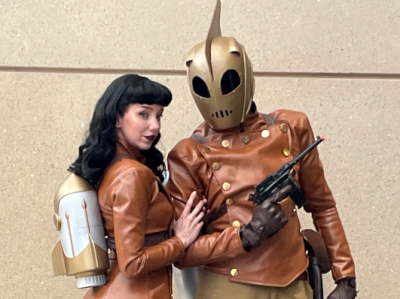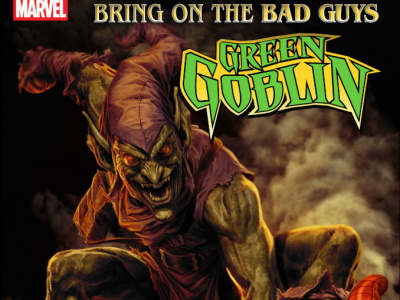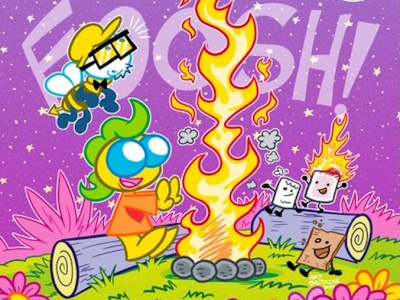Although this brief introduction cannot do justice to the work of the man who had the greatest influence on both Japanese manga and anime, it can help you begin to understand his role in the history of these art forms and why it is so important.
Like the drawing styles of Carl Barks (Uncle Scrooge) and Herge (Tintin), Tezuka's creations are built of strong simple lines. Tezuka's character designs have an Art Deco boldness and simplicity that retains its charm over the decades, but unlike Barks and Herge, Tezuka never specialized in one particular genre. Tezuka created all sorts of manga for a wide variety of audiences including boys (Tetsuwan Atom, or Astro Boy), girls (Princess Knight) and adults (Adolf, Blackjack). This visual style continues to dominate and define anime and manga to this day.
In the rubble of postwar Japan, the 19-year-old medical student, who adored Walt Disney cartoons, dreamed of creating his own animated films, but the economic chaos of the times dictated otherwise. The only outlet for Tezuka's creativity was newspaper cartooning, so he brought his cinematic sensibility to panel art. He expanded the moment like a film director, making the most of a suspense scene with numerous close-ups and reactions shots.
Tezuka's first major work, New Treasure Island, provides a perfect example of this approach. The story begins as the hero arrives at the dock to begin his fateful voyage. What might have taken one or two panels in a western comic took eight full pages in Tezuka's work as a car speeds along a cliffside highway with numerous cuts from long shots to reaction shots and shots from the point of view of the main character. Most important from a marketing point of view, Tezuka's 'long-form' narration dictated the format of Japanese manga--long chapters serialized in magazines and then collected in book length collections.
It wasn't until 1963 that Tezuka, in spite of his considerable success as a manga creator, was able to create his own cartoons -- and here too he was an innovator in adapting his own work Tetsuwan Atom (AstroBoy) for the screen. Tezuka, who reportedly saw Bambi 80 times, repaid his 'debt' to Disney by inspiring the Mouse's mega-hit The Lion King with Jungle Taitei (known in the U.S. as Kimba the White Lion).







